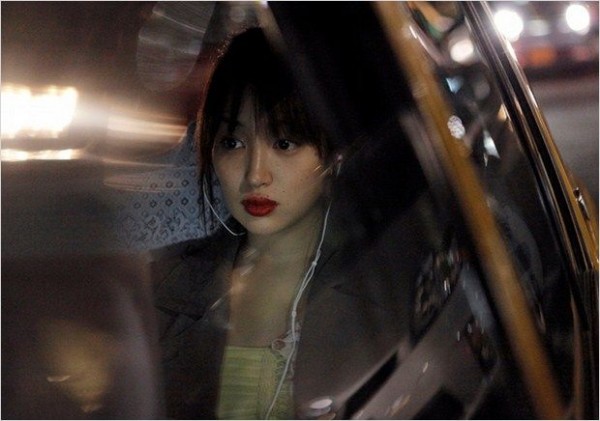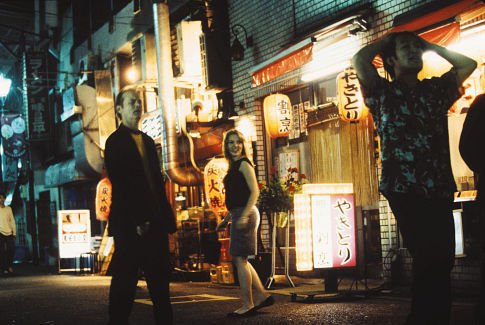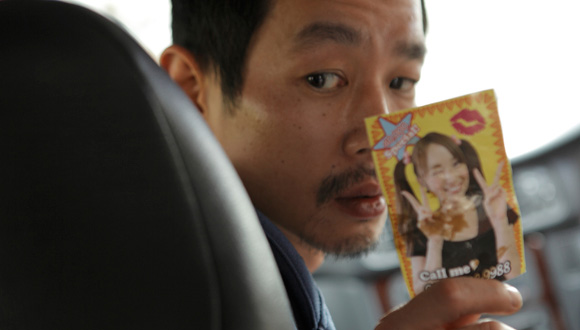Filmmakers, like novelists, usually do their best work when they set it in places they know best. The imagination can be sharpened by exile, but just as often it is stifled. For it is hard to achieve intimacy in an unfamiliar context.
To be sure, rare cosmopolitan polyglots, such as Max Ophuls, managed to make movies almost anywhere—Berlin, Paris, Hollywood, even Amsterdam. The filmmaker Michael Haneke—not an exile—has made masterpieces in France as well as in Germany and his native Austria. And what would old Hollywood have been without the Viennese wit of Billy Wilder, the Berlin sophistication of Ernst Lubitsch, or the Parisian finesse of Jean Renoir?
But failures in cultural transition—some of them interesting failures—are just as common. This is especially true when artists have to work in a language they don’t know. Oshima Nagisa is a fine director, but his French film Max, mon amour, starring Charlotte Rampling and a gorilla (her love interest) is dreadful. And Michelangelo Antonioni’s American movie, Zabriskie Point, must rank as one of his worst.
Several Western directors have tried to make movies in Japan. Most are terrible. Dr. Arnold Fanck, a German specialist in “mountain films” starring the young Leni Riefenstahl, made a Japanese Nazi-propaganda film in 1937, featuring a self-sacrificing Japanese hero in a setting of Shinto shrines and smoking volcanoes. It was panned by Japanese critics. In 1953, Joseph von Sternberg—admittedly a pale shadow of his brilliant former self—made The Saga of Anata-han, about a Japanese woman stranded on a Pacific island with ten men. It was not a success.
More recently, foreign directors have done better in Japan. Sofia Coppola’s Lost in Translation (2003) was funny, insightful, and ravishing to look at, but her main characters were Americans. And Clint Eastwood’s excellent war movie, Letters From Iwo Jima (2006), featured Japanese actors, but was not really set in Japan. Now we have Iranian director Abbas Kiarostami’s Like Someone in Love. The actors are all Japanese, and the story takes place entirely in and around Tokyo.
Like Someone in Love has all of Kiarostami’s usual preoccupations: the passage of time, the mystery and contingency of human intercourse, the shadow of death, the illusions of love, the intimacy of being isolated from the world in a moving vehicle. But the setting in Japan does not feel arbitrary; it has a point. Tokyo, the ultimate modern metropolis, with its neon-lit commercial graffiti and buildings that look like a pastiche of everywhere and nowhere, is perfect for Kiarostami’s story of closeness between strangers. To most foreign visitors, Tokyo looks uncannily familiar and yet deeply strange. Kiarostami is a stranger in Tokyo, but his depiction of the city is extraordinarily intimate and delicate.
Kiarostami’s idea for the film began with an image. Driving in a taxi through the raffish entertainment district of Roppongi, he filmed an elderly lady standing on a street corner. Who she was, what she was doing, why she was there, was a mystery pregnant with possibilities. In fact, she was an extra hired by Kiarostami to figure in random locations. This is the way Kiarostami prepares his films, with fragments of staged life filmed with a video camera, like sketches made in preparation for a large painting. He was also fascinated by the photographs of call girls pinned up in Tokyo telephone booths.
In time, fragments began to cohere into a story about a college student from the provinces, working as a call girl in the capital. The old woman on the street corner became her grandmother, waiting in vain for her granddaughter at a railway station, while the girl passes her by in a taxi.
The call girl (Takanashi Rin) is on her way to the apartment of an elderly professor (Okuno Tadashi). They have never met before. He doesn’t want to sleep with her. They make small talk. He has laid the table and opened a bottle of champagne, as if to recreate a long-ago scene of romance before he dies. The girl falls asleep in bed. The dinner is never consumed.
The professor drives the girl to her college the following morning. Her jealous boyfriend watches them arrive. The girl brushes him off. While she is taking an exam inside, the boy steps into the car, mistaking the professor for her grandfather. Later, when the boy finds out who the professor really is, he launches a violent attack on his home. What happens after that we will never know. What the professor wanted remains a mystery. In fact, we don’t know very much about the lives of the main characters at all. Pasts are only hinted at. And yet we pick up a great deal, from their conversations, their habits, their fears, their obsessions. Knowing little, we still feel at the end of the film that we know them.
Advertisement
This is the peculiar genius of Kiarostami. He explores human character, and the vagaries of human lives, without explaining, without turning the lives into neat stories with a beginning, a middle, and an end. Life isn’t logical, nor are our encounters with others. People are rarely what they seem to be—to themselves, or to others. Which is why Kiarostami’s films, though often detached, even artificial, still feel like life.
One way he achieves this effect is to withhold the story from his actors even as they are making the film. They are given their lines on a daily basis. As in real life, they never know what will happen next. The most extraordinary performance in Like Someone in Love is given by Okuno Tadashi, a professional film extra who had no idea he was being cast for a main part. His confrontation with the jealous lover, in the car, has all the tentative awkwardness and misleading intimacy of a real close encounter with a stranger. In a way, they are not acting out parts; they are, as it were, living inside the movie.
This is another recurring theme in Kiarostami’s work: the porous borderline between art and life, the illusory nature of authenticity. Taste of Cherry (1997), one of his most brilliant movies, ends with a camcorder shot of Kiarostami and his crew shooting the film we have just seen. Like Someone in Love ends in an act of shocking violence, inside an apartment outside Tokyo, which was built for the movie on a real location. Like Kiarostami shooting the image of the waiting lady through his taxi window, we have observed other people, while filling in the mystery of their lives with our own imaginations. Through his work of art, Kiarostami has given us a piece of life, familiar, yet deeply strange.
An artistic tragedy of our time has been the systematic destruction of the Iranian cinema, one of the great modern film cultures. One by one, Iran’s best filmmakers have been forced by their theocratic government to stop making movies in their own country. Jafar Panahi is in prison. Mohsen Makhmalbaf languishes in Paris. Kiarostami, perhaps the greatest director of them all, can still live in Iran, but is prevented from making the kind of films he wants there.
Still, if anyone is equipped to overcome the cultural handicap of working in a foreign milieu, it is Kiarostami. A modernist, in his Iranian films he plays with concepts of time, mortality, and contingency; the films are so pared down that they become almost abstract. Taste of Cherry, about a suicidal man driving around in his car picking up random passengers in the hope of persuading one of them to help with his burial, is set in Teheran, but could be almost anywhere. Yet it does not feel like nowhere, either. The people are Iranian; they are in Iran; they speak Farsi. This makes even a rather formalist film look real, rooted in real life.
Kiarostami’s first film made in the West, Certified Copy (2010), starring Juliet Binoche, was filmed in Tuscany. The landscapes and cities are unmistakably Italian. And yet, to me, the film did seem oddly rootless; the setting seemed arbitrary—beautiful certainly, but arbitrary. There was no earthly reason for the story of a mysterious love match between a French antique dealer (Binoche) and an English writer (William Shimmell) to be set in Tuscany. They speak a mixture of English and French. There are no Italian characters of any importance in the entire film. But perhaps that was just the point. As was true of Roberto Rosselini’s wonderful Journey to Italy (1954), with the Swedish Ingrid Bergman and the very English George Sanders, the foreign location dramatizes the couple’s mutual sense of alienation. They exist in an oppressive bubble, cut off from their familiar surroundings—a bit like the director himself, perhaps.
One thing Journey to Italy and Certified Copy, and indeed Taste of Cherry, have in common is that much of the action takes place in a car. The same is true once again in Kiarostami’s latest film, a much more satisfying work, in my view, than Certified Copy. To say that it is the best film made by a foreigner in Japan would sell it short. It is a great movie tout court.
Abbas Kiarostami’s Like Someone in Love is being screened at the Stockholm Film Festival this month and is now showing in France and Japan. A US release is expected in 2013.
Advertisement







